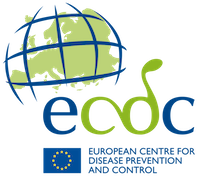Scientific advances – Intravenous artesunate for severe Malaria in Travelers, EuropeArchived
This study describes the outcome of 25 travellers with severe malaria who returned from malaria-endemic regions and were treated at 7 centres in Europe with intravenous artesunate. Among these 25 patients, one child and 24 adults (mean ± SD age 44.1 ± 16.1 years), 10 patients received the dosing regimen for artesunate initially recommended by WHO and 11 received artesunate, 2.4 mg/kg/dose.
Zoller T, Junghans, T, Kapaun A et al. Emerg Infect Dis 2011;17:771-777
This study describes the outcome of 25 travellers with severe malaria who returned from malaria-endemic regions and were treated at 7 centres in Europe with intravenous artesunate. Among these 25 patients, one child and 24 adults (mean ± SD age 44.1 ± 16.1 years), 10 patients received the dosing regimen for artesunate initially recommended by WHO and 11 received artesunate, 2.4 mg/kg/dose. The therapy also included doxycycline and/or other molecules. All patients survived and treatment rapidly reduced parasitaemia levels. Unexplained haemolysis occurred after reduction of parasitaemia levels in some of them.
ECDC comment: Multicentre trials in Southeast Asia have shown higher survival rates among patients with severe malaria, particularly those with high parasitemia levels, treated with IV artesunate than those treated with quinine. In Europe, quinine remains the primary treatment for severe malaria. In this retrospective study from January 2006–June 2010 the authors found high clinical and parasitological efficacy of IV artesunate and self-limited side effects in a series of European non-immune patients, suggesting it as an alternative to quinine for treatment of malaria patients in Europe. Meanwhile only 10 patients received the dosing regimen for artesunate initially recommended by WHO. However, artesunate is not available or licensed for this indication in European countries and available product is not manufactured according to good manufacturing practices. The need for controlled studies and a pharmacovigilance programme in Europe is now open to discussion although the limited numbers of patients make it difficult to conduct trials with sufficient statistical power.




